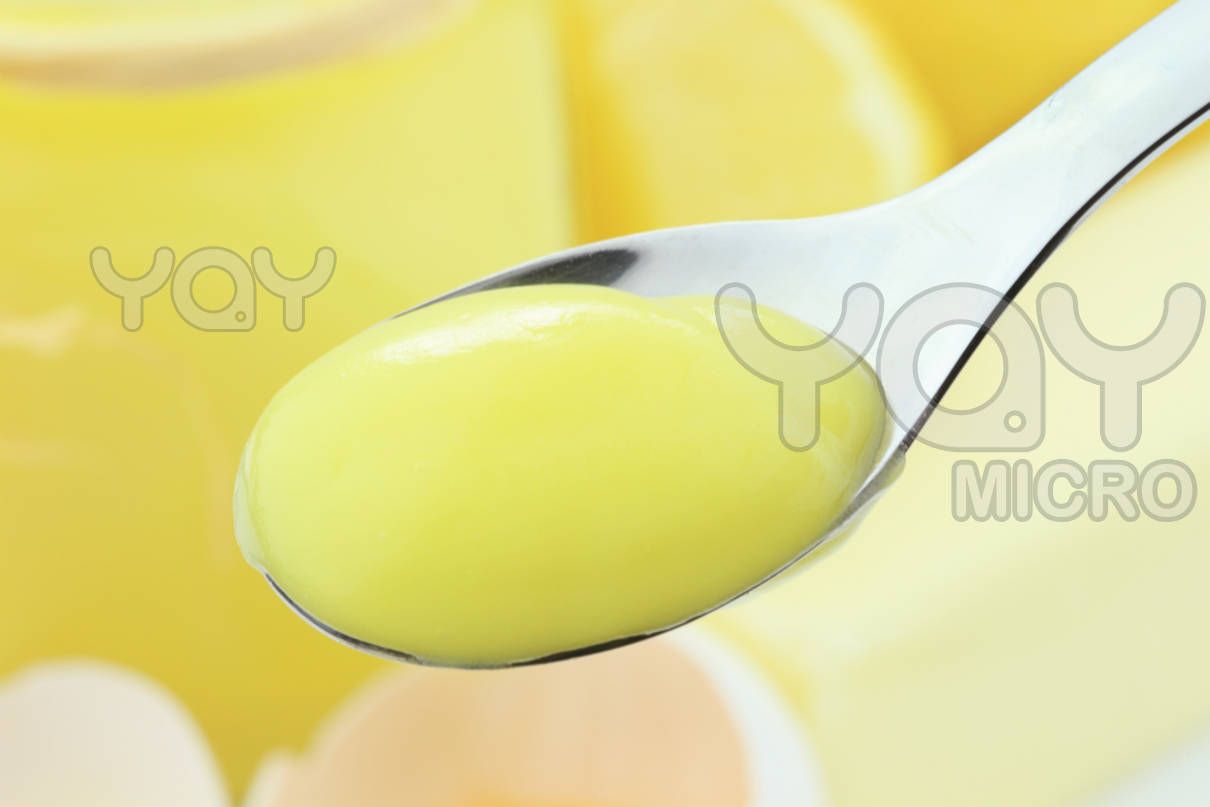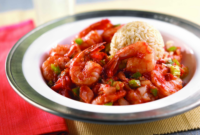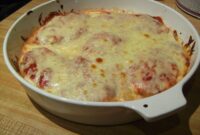South Beach Phase 2 desserts represent a unique culinary landscape, blending innovative techniques with carefully sourced ingredients. This exploration delves into the trends, ingredients, recipes, and customer perceptions shaping this vibrant dessert scene, offering a comprehensive look at what makes these treats so special. We will examine popular dessert trends, ingredient sourcing, preparation methods, and the overall customer experience, painting a vivid picture of South Beach’s Phase 2 dessert offerings.
From the visually stunning presentations to the unique flavor profiles, South Beach Phase 2 desserts offer a delightful experience for both the eyes and the palate. This analysis will uncover the secrets behind their success, highlighting the creativity and dedication of the chefs and the preferences of the discerning clientele.
South Beach Phase 2 Dessert Trends
South Beach Phase 2, known for its emphasis on healthy eating while still indulging, has seen a fascinating evolution in its dessert offerings. Restaurants are increasingly focusing on desserts that align with the phase’s dietary guidelines, resulting in creative and delicious options that are both satisfying and guilt-free (relatively speaking!). This shift reflects a growing consumer demand for healthier, yet flavorful, dessert choices.
Emerging Dessert Trends in South Beach Phase 2 Restaurants
Three prominent trends are shaping the South Beach Phase 2 dessert landscape: the rise of naturally sweetened options, the incorporation of unique and unexpected flavor combinations, and the emphasis on visually stunning presentations. Many restaurants are now utilizing sweeteners like stevia, monk fruit, and agave nectar, reducing refined sugar content while maintaining sweetness. Simultaneously, chefs are experimenting with unusual flavor pairings, often incorporating fresh, seasonal fruits and herbs. Finally, plating is becoming an art form, with desserts meticulously crafted to be as visually appealing as they are delicious.
Comparative Analysis of Dessert Presentation Styles
Let’s compare the presentation styles of three popular desserts from different South Beach Phase 2 establishments. Imagine a Coconut Chia Seed Pudding from a trendy café, served in a small, elegant mason jar, layered with fresh mango and a sprinkle of toasted coconut flakes. The rustic charm of the jar contrasts beautifully with the vibrant colors of the pudding and fruit. Next, picture a vibrant Berry Parfait from a health-conscious restaurant. This dessert might be presented in a tall, clear glass, showcasing the layers of Greek yogurt, mixed berries, and a delicate crumble topping. The transparency of the glass allows for a full appreciation of the layered textures and colors. Finally, consider a Deconstructed Key Lime Pie from a fine-dining establishment. This could involve a small scoop of key lime curd, a few pieces of graham cracker crumble, and a dollop of whipped coconut cream artfully arranged on a white plate. The deconstructed approach allows for a playful, modern aesthetic. The stark white plate provides a clean backdrop, allowing the bright colors of the dessert to pop.
Price Comparison of Popular South Beach Phase 2 Desserts
The following table compares the price points of five popular South Beach Phase 2 desserts across various establishments. Prices are approximate and may vary depending on the restaurant and specific ingredients.
| Dessert | Establishment Type | Price Range |
|---|---|---|
| Coconut Chia Seed Pudding | Café | $8-$12 |
| Berry Parfait | Health-Conscious Restaurant | $10-$15 |
| Deconstructed Key Lime Pie | Fine-Dining Restaurant | $15-$20 |
| Avocado Chocolate Mousse | Vegan Restaurant | $12-$18 |
| Grilled Pineapple with Coconut Sorbet | Upscale Bistro | $14-$22 |
Popular South Beach Phase 2 Dessert Ingredients
South Beach Phase 2, a popular diet plan, emphasizes low-carbohydrate and moderate-protein intake. This necessitates creative approaches to desserts, resulting in the utilization of specific ingredients that satisfy sweet cravings while adhering to dietary restrictions. The following explores some key ingredients commonly found in South Beach Phase 2-compliant desserts.
Unique Ingredients in South Beach Phase 2 Desserts
Three unique ingredients frequently incorporated into South Beach Phase 2 desserts are almond flour, coconut flour, and stevia. Almond flour, made from blanched and ground almonds, provides a nutty flavor and texture similar to traditional wheat flour, but with significantly fewer carbohydrates. Coconut flour, derived from dried coconut meat, adds a subtle coconut flavor and creates a moist, dense texture in baked goods. Stevia, a natural sweetener extracted from the stevia plant, offers intense sweetness with minimal impact on blood sugar levels, making it a suitable replacement for sugar in these desserts. These ingredients contribute to the overall taste and texture profiles while keeping the desserts aligned with the dietary guidelines.
Sourcing and Sustainability Practices of Key Ingredients
Five key ingredients—almonds, coconuts, stevia, cocoa powder, and berries—deserve consideration regarding their sourcing and sustainability. Responsibly sourced almonds are crucial, as almond farming can be water-intensive. Look for almonds from farms employing water-efficient irrigation techniques and sustainable land management practices. Similarly, sustainably harvested coconuts ensure fair labor practices and environmental protection of coconut palm ecosystems. Stevia production should prioritize methods that minimize environmental impact and avoid the use of harmful pesticides. Choosing cocoa powder from certified sustainable sources supports fair trade practices and protects biodiversity in cocoa-growing regions. Finally, selecting locally sourced berries reduces transportation emissions and supports local farmers. Supporting sustainable practices for these ingredients ensures both the quality of the dessert and the well-being of the planet.
Common Ingredients and Culinary Applications
The following list highlights ten common ingredients and their versatile culinary applications in South Beach Phase 2 desserts:
- Almond Flour: Used as a base for cakes, muffins, and cookies, replacing traditional wheat flour.
- Coconut Flour: Ideal for adding moisture and a subtle coconut flavor to cakes and brownies.
- Stevia: A natural sweetener used in place of sugar in various desserts.
- Erythritol: A sugar alcohol that provides sweetness with minimal impact on blood sugar.
- Unsweetened Applesauce: Adds moisture and sweetness to baked goods.
- Chia Seeds: Contribute to a thicker texture and add nutritional value.
- Cocoa Powder: Used in brownies, mousse, and other chocolate-based desserts.
- Berries (strawberries, blueberries, raspberries): Offer natural sweetness and antioxidants.
- Nuts (almonds, walnuts, pecans): Provide healthy fats, protein, and texture.
- Greek Yogurt: Adds creaminess and protein to mousse and other desserts.
South Beach Phase 2 Dessert Recipes & Techniques
South Beach Phase 2 focuses on reducing refined carbohydrates and added sugars while still allowing for delicious desserts. This requires creative recipe adaptations and innovative techniques to maintain flavor and texture without compromising the dietary guidelines. The following sections detail a signature recipe, innovative techniques, and a comparison of preparation methods, all within the parameters of the South Beach Phase 2 diet.
A Signature South Beach Phase 2 Dessert: Berry Almond Chia Seed Pudding
This recipe provides a delicious and satisfying dessert that aligns perfectly with the South Beach Phase 2 guidelines. It’s rich in fiber, antioxidants, and healthy fats.
Ingredients:
- 1 cup unsweetened almond milk
- 1/4 cup chia seeds
- 1 tablespoon honey or maple syrup (optional, use sparingly)
- 1 teaspoon vanilla extract
- 1/2 cup mixed berries (strawberries, blueberries, raspberries)
- 1/4 cup slivered almonds, toasted
Instructions:
- Combine almond milk, chia seeds, honey/maple syrup (if using), and vanilla extract in a bowl or jar.
- Stir well to ensure the chia seeds are evenly distributed.
- Cover and refrigerate for at least 4 hours, or preferably overnight, to allow the chia seeds to absorb the liquid and create a pudding-like consistency.
- Before serving, gently stir the pudding. The consistency should be thick and creamy.
- Divide the pudding into individual serving bowls or glasses.
- Top with fresh mixed berries and toasted slivered almonds.
Innovative Techniques in South Beach Phase 2 Dessert Preparation
Employing innovative techniques is crucial for creating appealing South Beach Phase 2 desserts. These techniques help to enhance both the flavor and texture profiles.
- Using alternative sweeteners strategically: Instead of relying solely on artificial sweeteners, explore the use of small amounts of natural sweeteners like stevia, erythritol, or monk fruit, combined with spices like cinnamon or nutmeg to enhance the perceived sweetness and complexity of flavor. This approach creates a more nuanced and satisfying taste experience without excessive sugar.
- Pureeing fruits and vegetables for moisture and sweetness: Pureeing fruits like avocado or pumpkin, or vegetables like zucchini, adds moisture and natural sweetness to baked goods without compromising the dietary restrictions. This technique also creates a smoother texture in cakes and muffins.
- Incorporating healthy fats for richness and texture: Using healthy fats like avocado oil, coconut oil, or nut butters adds richness and creaminess to desserts. These fats contribute to a more satisfying mouthfeel without the heaviness often associated with traditional desserts. For example, avocado oil can be used in place of butter in many recipes.
Comparison of South Beach Phase 2 Dessert Preparation Methods
Several methods can be used to create South Beach Phase 2 compliant desserts, each with its advantages and disadvantages.
| Method | Advantages | Disadvantages |
|---|---|---|
| Baking | Allows for a wider variety of textures and flavors; recipes can be easily adapted from traditional recipes. | Can be time-consuming; requires precise measurements and oven temperature control; some recipes might still use some level of added sugar. |
| No-Bake | Quick and easy; often requires fewer ingredients; perfect for impromptu desserts. | Limited texture options; flavor profiles can be less complex; reliance on pre-made ingredients might affect the overall nutritional value. |
| Freezing | Creates a refreshing and unique texture; ideal for fruit-based desserts; can be a convenient way to prepare desserts in advance. | Requires proper freezing and thawing techniques to maintain quality and texture; some recipes might require specialized equipment. |
Customer Reviews and Perceptions of South Beach Phase 2 Desserts
Online reviews offer invaluable insight into the success of South Beach Phase 2 desserts, revealing common themes regarding taste, presentation, and overall dining experience. Analyzing these reviews allows restaurants to understand customer preferences and refine their offerings to better meet expectations. Positive feedback often centers on the balance of flavor and health-consciousness, while constructive criticism frequently highlights areas for improvement in texture or portion size.
The presentation of a dessert significantly impacts customer perception and satisfaction. A visually appealing dessert enhances the overall dining experience, creating a positive first impression and increasing the perceived value. Conversely, a poorly presented dessert, regardless of its taste, can lead to disappointment and negative reviews. Careful attention to plating, garnishes, and the use of color and texture are crucial elements in elevating the dessert experience.
Influence of Dessert Presentation on Customer Satisfaction
The visual appeal of a South Beach Phase 2 dessert is paramount. Imagine a restaurant serving a chia seed pudding parfait. A poorly presented version might simply be a scoop of pudding in a bowl, lacking visual interest. However, a well-presented version might layer the pudding with fresh berries, a drizzle of honey, and a sprinkle of toasted coconut flakes, creating a visually stunning and appetizing dessert. This careful arrangement instantly elevates the perceived quality and value, leading to a more positive customer experience and a higher likelihood of positive online reviews. The strategic use of color, height, and contrasting textures enhances the aesthetic appeal, making the dessert more desirable and memorable.
Hypothetical Customer Experience with a South Beach Phase 2 Dessert
Imagine Sarah, a health-conscious individual, dining at a South Beach Phase 2 restaurant. She orders the “Dark Chocolate Avocado Mousse.” The mousse arrives beautifully presented: a small, elegant glass showcasing layers of rich dark chocolate mousse, creamy avocado puree, and a delicate sprinkle of cacao nibs. The presentation alone impresses Sarah. The first bite reveals a surprisingly delicious balance of decadent chocolate and subtly sweet avocado. The texture is smooth and creamy, not overly rich. The cacao nibs add a delightful crunch and a touch of bitterness that complements the sweetness. Sarah is delighted; the dessert satisfies her sweet craving without feeling overly indulgent. Her overall experience is positive, leaving her wanting to return and try other desserts on the menu. This positive experience translates into a glowing online review, highlighting the taste, presentation, and overall satisfaction.
Visual Representation of South Beach Phase 2 Desserts
The visual appeal of South Beach Phase 2 desserts is crucial to their success. These desserts, designed to be both delicious and diet-friendly, must entice the eye while maintaining a sense of lightness and healthfulness. The presentation should reflect the careful balance of flavors and ingredients inherent in the recipes.
The visual elements employed often emphasize natural colors and textures, avoiding overly rich or decadent appearances that might contradict the diet’s principles. Simplicity and elegance are often preferred over overly elaborate decorations.
Visual Descriptions of Three South Beach Phase 2 Desserts
Three distinct South Beach Phase 2 desserts showcase the range of visual possibilities within the dietary guidelines. First, imagine a vibrant berry parfait layered in a clear glass. The deep red of raspberries and the juicy purple of blueberries contrast beautifully with the creamy white of Greek yogurt and the subtle tan of almond flour crumble. The texture is a delightful mix of smooth, creamy yogurt, bursts of juicy berries, and a satisfyingly crunchy crumble. The clear glass allows for a full appreciation of the layered effect, enhancing the overall visual appeal.
Second, consider a slice of chocolate avocado mousse cake. The deep, dark brown of the mousse is unexpectedly rich and inviting, despite the healthy avocado base. The smooth, almost glossy surface reflects light beautifully. A dusting of cocoa powder adds depth and visual texture, subtly hinting at the chocolate flavor. The cake is often served on a small, elegant plate, emphasizing its sophisticated simplicity.
Finally, envision a refreshing lime and coconut chia seed pudding. The pale green of the lime is balanced by the creamy white of the coconut milk, creating a soothing and visually appealing contrast. The small, dark chia seeds add texture and visual interest, scattered throughout the pudding. The pudding is often served in a small bowl, perhaps garnished with a few lime zest shavings for an extra touch of visual appeal and a hint of aromatic freshness.
Enhancing the Presentation of a South Beach Phase 2 Dessert
Let’s focus on the berry parfait. The visual impact is heightened by the careful layering of the ingredients. The vibrant colors are arranged to create a visually appealing gradient, starting with the lightest color at the bottom and progressing to the darkest at the top. The clear glass allows the layers to be fully visible, showcasing the texture and color variations. A small sprig of fresh mint adds a touch of green, providing a visual contrast and enhancing the overall freshness of the dessert. The simplicity of the plating allows the natural beauty of the ingredients to shine.
Visual Impact of a South Beach Phase 2 Dessert
The light reflects off the glossy surface of the chocolate avocado mousse cake, creating a subtle sheen that hints at its rich, decadent texture. The deep brown color evokes feelings of warmth and indulgence, while the subtle dusting of cocoa powder adds a touch of elegance. The smooth, velvety texture is almost palpable, inviting a delicate touch and a slow, savoring bite. The aroma of dark chocolate subtly wafts upwards, complementing the visual experience and creating a truly immersive sensory experience.
Closure
In conclusion, South Beach Phase 2 desserts are more than just sweet treats; they are a reflection of culinary innovation, sustainable practices, and a commitment to delivering an exceptional customer experience. The trends, ingredients, and techniques discussed here showcase the dynamic nature of this culinary niche, promising a continually evolving and exciting dessert landscape for years to come. The careful balance of flavor, presentation, and ingredient sourcing ensures that these desserts remain a highlight of the South Beach dining scene.




